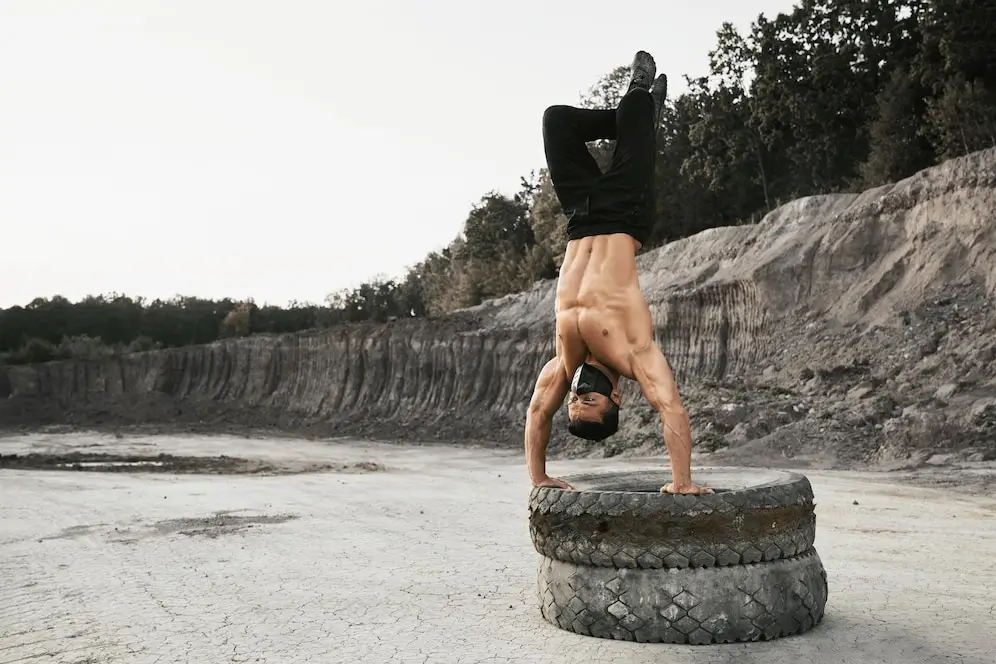
Table of Contents
Mastering the Art of Handstand Workout: Techniques, Benefits, and Progression
One of these amazing posture forms is the simple, yet beautiful inverted hand-standing called “the handstand” which has been intriguing humans since time immemorial. The Handstand Workout is a superhero pose, which shows that it’s strong, balanced, and has a little bit of supernatural abilities.
Irrespective of whether one wants to be a yogi in pursuit of inner peace or acrobat displaying skills, handstand is a very basic but key skill that forms the base for various other activities.
This article takes us through the history, scientific basis, or benefits of the Handstand Workout exercise. We also discuss the technique involved, the basics or beginners’ level to an advanced mastery of the movement.
A Brief History
It is not surprising that hand balancing has been with mankind for centuries. Ancient civilizations such as the Indian ones used handstands for improving body force while developing internal clarity.
To the east it was referred to as the Ado Mukha vrikshasana while in the west the handstands became one of the most spectacle form of physical exercises among circuses and acrobats.
Similar handstands have also been seen in different martial art forms and gymnastics during their history. These imply that strength, agility, and body control can only be built with them through such disciplines.
The Physical Benefits of Handstands:
- Strength: The handstand requires the most amount of power on the body’s upper areas including the shoulder, arms and wrists. It also works to strengthen the core that supports the upright position of the body during the inverted stance.
- Balance and Coordination: This is needed for perfect coordination of body actions essential for hand stand achievement and sustenance. You learn balancing on the tips of your fingers, which helps improve your coordination and spatial awareness.
- Improved Blood Flow: The more blood that flows to the brain when someone is upside down, then the better. It relieves stress and enhances thinking abilities.
- Enhanced Bone Health: Bones grow denser and develop when they are under weight-bearing exercises such as handstands. This has the potential to alleviate diseases such as osteoporosis in the long run.
- Increased Confidence: Overcoming the phobia of being upside down enhances confidence and the overall sense of accomplishment.
Handstand Techniques:
- Preparation: Firstly, do the wrist and shoulder warm ups. This also implies having enough wrist flexibility and power to prevent injury.
- Kick-Up: Keep one leg flat and place the other leg in the air; use both hands to push down on the floor to stretch out the back muscles. This will give you an idea of how it is like to balance on your hands.
- Balancing Act: Focus on bringing your legs together and squeezing your core as soon as you kick off ground for stability. Focus your eyes on specific spot on the ground to maintain balance.
- Alignment: Make sure your body forms a straight line with ears, shoulders, hips, knees and ankles aligned vertically.
- Practice: Consistency is key. Training consistently is the best way to get stronger, become balanced and master techniques.
Progressing from Beginner to Advanced:
- Wall Assists: Make use of the wall for support as you begin. Ensure that, with time, people stop relying heavily on the wall.
- Straddle Handstand: Having attained the ability to keep stable in the handstand position, shift into a spread-leg position.
- Tuck Handstand: At the same time, you bring your knees toward your chest that make a tuck-up of yourself. It is a foundation of something greater than these simple forms.
- One-Arm Handstand: One of the feats that demonstrate impressive strength and balance is the one-arm handstand. For advanced practitioners, it is an aspiration.
- Freestanding Handstand Push-Ups: The last challenge is to practice handstand push-ups without assistance. Such positions are very tough on shoulders and core muscles.
Safety Considerations:
- Ensure that you handstand only on a soft surface or with the assistance of a spotter while learning.
- Practice correct conditioning of wrists and shoulders for prevention of injury.
- Don’t be in a hurry for progress, it takes time building strength and balance.
Conclusion
Finally, the Handstand Workout is an amazing and multi-purpose skill with lots of physical and psychological health advantages. Art and science are at the same time with power, balance and concentration, you must never lose.
It doesn’t matter whether you are a yoga seeker, an acrobatic performer, or just an ordinary person wanting to test his limits; handstands are an inspiring adventure that will certainly transform your attitude towards yourself. Therefore, roll out your rug, warm up your wrists and start your own way to handstand world.